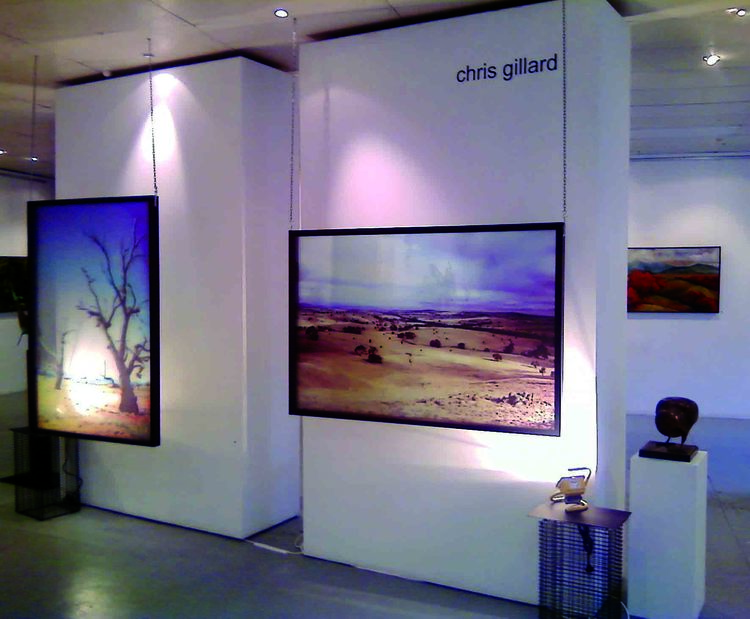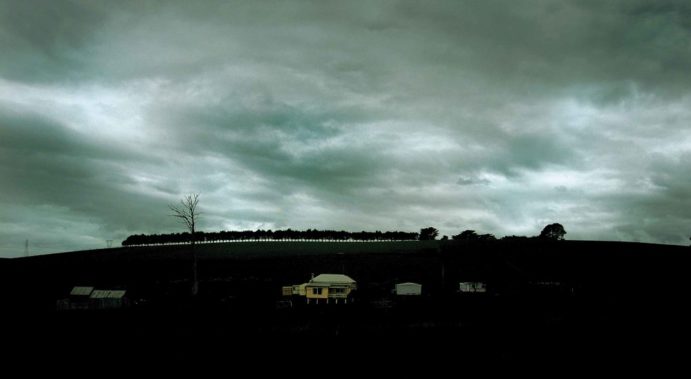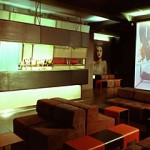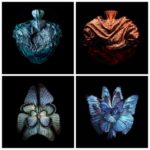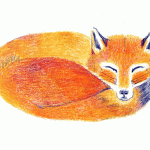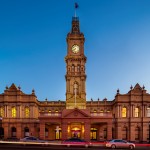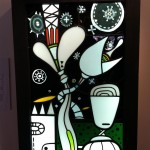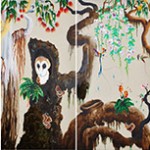By Celeste Hawkins
Many of us at some point in our adult lives, return to what we loved most as a child. Some of us even make a career of it and fully delve into the innocence of what truly has us immersed in our element or our true nature. As a child travelling around Australia, photographic artist Chris Gillard recalls the seemingly endless two day long family trips to the evocative gem fields in Central Queensland, and suddenly grasping the limitless possibilities in the night skies. “I remember looking up, trying to comprehend each one and realising there was no end to the universe and the possibilities were endless.” He would spend hours drinking in the landscape around him. Fast forward to now, he is making the most of it – inventing, philosophising and documenting.
“I guess for me it was my parents who encouraged my focus on the environment. And I was always questioning what was happening politically even when I was little – clips of the news where trees were being chopped down. I couldn’t understand it and I still don’t”. This childlike enthusiasm has Chris investigating everything that the land has to offer, even the dark.
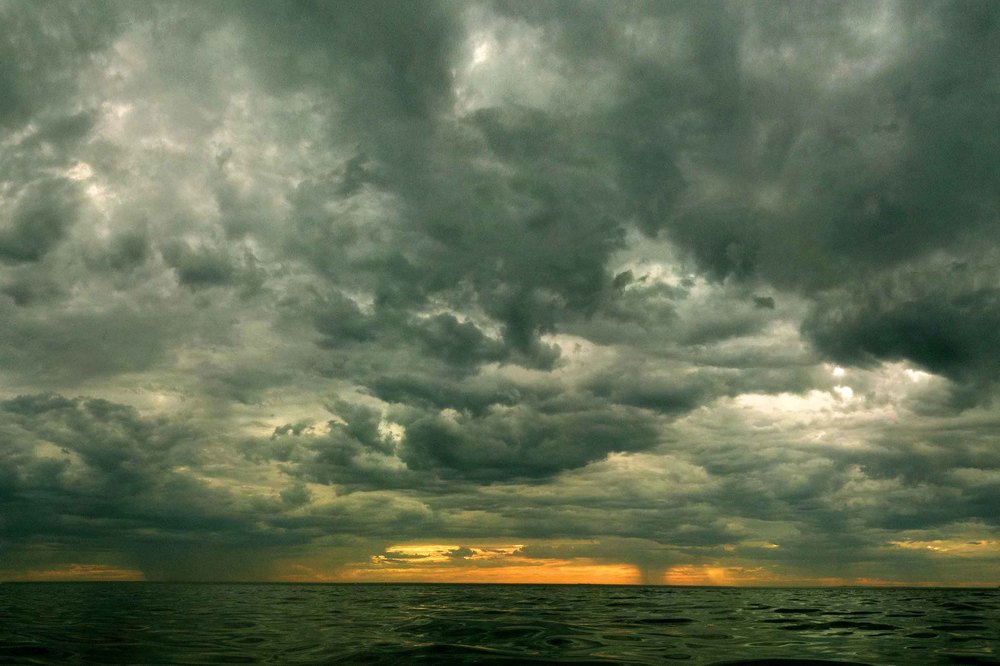
Bay Clouds 1-Darkness musters in the sky as distant squalls provide watercolour brushstrokes over Port Philip Bay. Near Brighton, Melbourne, Victoria, Australia.
He is philosophical about the impending doom or darkness surrounding climate change, despite the ongoing degradation of the land. Interested in the beauty in everything, even the blip of light in the darkness – he describes his approach as trying to find a balance between “light and dark”.
Chris categorises his work by mood pointing out that written works use the same descriptions.
“ Literature has always associated our natural environment with the whole spectrum of emotions: calm, angry, unsettled, brooding, serene. For me it makes sense to attach feelings to pictures of the environment as well, which is why I categorize my landscape work by Mood. I want people to feel something that I felt when I was there. I think it’s only when more people start to associate and connect strong emotion with the environment that they will appreciate that we are one and the same, biologically connected and mutually reliant.”
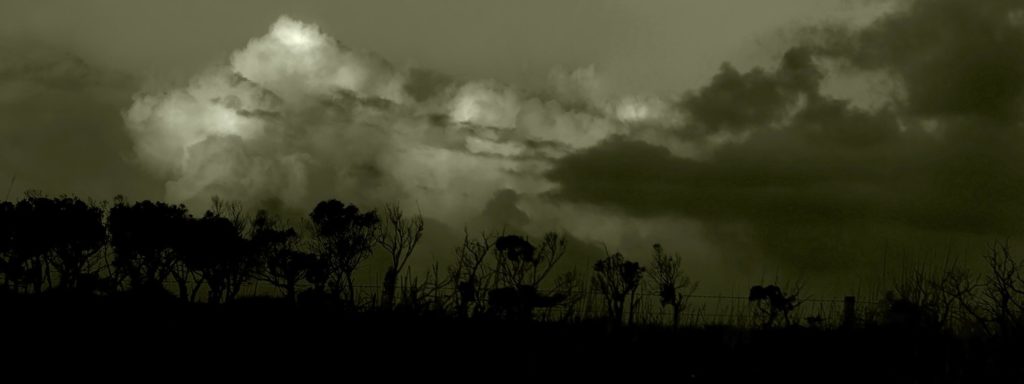
Rising Cumulonimbus 1-In the semi-darkness, Cumulus Congestus clouds join forces, planning an assault of lightning, thunder, wind, rain and hail. Near Timboon, Victoria, Australia.
He discusses many things; inequality and the need for all businesses, big and small to give back, the rise of creativity as a powerful force for good, politics and of-course environment.
“It bothers me that the environment has been degraded so completely in so short a time by humans – a matter of decades really. A blink in cosmic time. But we are constantly being told that it’s the truth of our time that climate is changing, but why just sit back and accept that? Edward De Bono talked about the idea of ‘proto-truth’ in his book ‘The Happiness Purpose’ and he’s right. Truth is a fluid concept. The term ‘Climate Change’ was an invention of a government acting not for people or planet, but corporate interests; it is propaganda that deliberately positions our situation as being inevitable. If we act together it’s not.” Whilst acknowledging the problems that a warming climate brings, by not accepting this as the “inevitable truth”, Chris documents the beauty of our “fragile landscapes” sharing with us his devout passion for photographing nature, always reminding us why we should feel empowered to preserve it.
Website–fineartlandscapes.photography
Instagram– @fragile_landscapes
ART DIARY 6- CHRIS GILLARD
I’m seven years old on another long road trip, riding in the back seat of a blue Holden Gemini in the early 1980’s Australia. I’m looking out the window…
It’s my granddad driving and we’re two hours west, inland, making our way across the Queensland border into New South Wales. It’s Summer and scorching late afternoon light and heat stifles the car interior while the road shimmers and melts ahead. The shiny chrome seat-belt buckle that stops me from being a potential projectile is so hot you could cook with it and I’m constantly squirming around trying to avoid small, painful third degree burns on my seven year-old legs. Violent storms were just a normal Summer phenomenon in that part of the world and I loved everything they offered: lightning, thunder, wind, hail, and rain in massive proportions. I loved the way storm clouds changed light, colour and physical feelings. From the car I would carefully watch clouds build for hours as we traveled. I didn’t have a camera at that stage and I didn’t have a license to drive. If so, I would have become one of the first storm chasers. Instead I had to relegate this kind of road trip imagery to memory. And spend my life trying to recapture that light, those feelings and moods. I was shuttled all over the place on long road trips, not just with my Grandad, but my dad too. We covered pretty much the whole east coast of Australia over the years and as a result my storm obsession widened to a full-blown love of the environment, in all its shades, from lightest to darkest. I saw its whole spectrum of emotions: calm, angry, unsettled, brooding, serene. I felt that we were one and the same, part of the same global canvas.

Otway Storm-A green-coloured storm cell, promising hail, moves over the Otway Ranges. Near Anglesea, Great Ocean Road, Victoria, Australia.
Someone obviously listened to my pleading for a camera and I was given a little instamatic around the same age. So at those times when I was not on a road trip with Grandad, I was on the roof of our house for hours at a time scanning the horizon for anvil shapes and those telltale cauliflower cloud structures – waiting to click. I would sit on the roof and scan the sky for the types of clouds that preceded storms, even days out. Mackerel sky, Mammas, Cumulus Congestus, Alto Cumulus, Cirro-Stratus, Cirrus, Alto-stratus, and more: I knew them all. On weekends I’d spend most of the day on the roof, alone, watching and waiting, camera in hand. I wasn’t just watching the clouds and shifting landscapes. I was also watching my family and my early observations revealed to me something I was already feeling: that you do not choose to be an artist. My Grandmother was a great lady and a multidimensional creative: oil painter, sculptor, puppeteer. Her husband, my Grandfather who was tragically killed in WW2, while he was given the title of Officer on the HMAS Perth, was more deserved of the title of Stunningly Talented Writer who made his artform expressing powerful love through simple words. My father also, continues to be a prolific painter of oils, watercolours and more while he also writes poetry. They chose art over all else, as a priority. For every artist it is an occurrence that naturally manifests inside the body and the mind. When you have a need to create, it is inherent; built into your soul; your only way of being, seeing, feeling and expressing…In every body of work, there is blood.
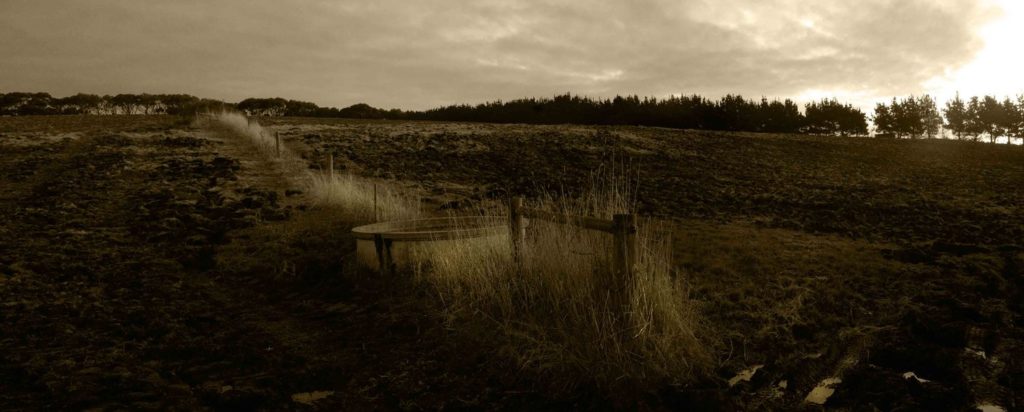
Barren Fields-Paddocks lie empty of colour and life in the near darkness of a defeated day. Near Port Campbell, Victoria, Australia.
So I was born steeped in the smell of Linseed oil, with art as a fundamental component of my being. By the time I was a teenager, I had earned my Masters in Backyard Studio Observation, Majoring in ‘Asking Heaps of Questions’ and ‘Washing Sable Brushes’ and my love of environment merged with my love of art. Despite my early indoctrination into the Painterly world, I was not drawn to canvas so much as I was drawn to film. You can stand all afternoon and paint a wonderful landscape. You have but a millisecond to capture lightning. As I look back at those times when I sat or stood on the roof of my home, scanning the skies for so many hours when I was young, the most obvious sense I invoked was sight, but perhaps the deeper learning came through my other senses… Learning to see is a crescendo, the result of a combination of learning to feel, listen, smell, touch and taste.
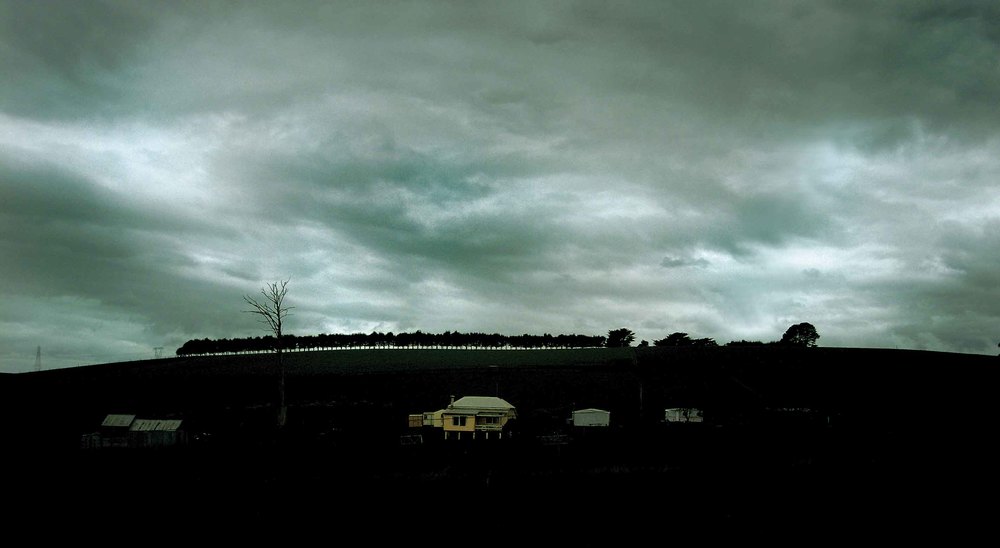
Farmhouse 1- A farmhouse sits gloomy, alone and remote on a hill. Darker clouds will move in. Near Loongana, North West Tasmania, Australia.
Seeing through totality of feeling was the beginning of a method I am still learning. Embracing a mood became the beginning of my art. And it has only just begun. Being an artist is a journey that does not begin with a lesson or end in retirement. I can improve and gain more insight as long as I stick to my natural curiosity and maintain loving connectivity to something much bigger, more important and mysterious than myself. The creation of art often begins as a solitary process many times for me, but should never remain so. Only by connecting to something that is not me, will I connect with others, the other.
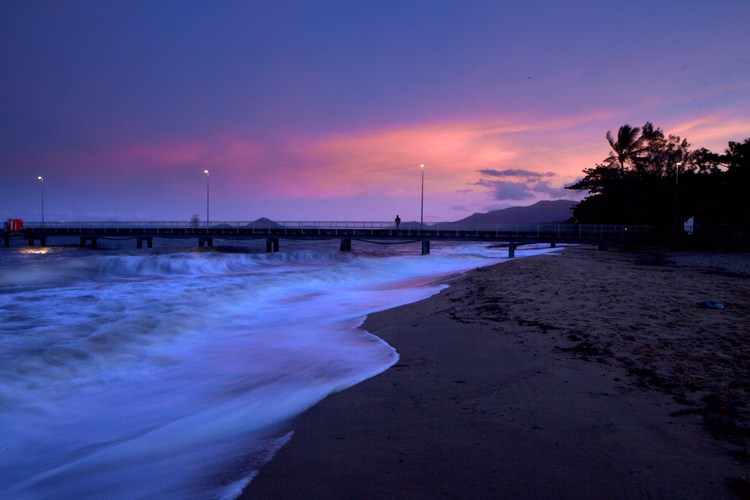
Figure on Pier-A lone figure stands on a pier in the tropics at twilight, bathed in pink light. Palm Cove, Queensland, Australia.
As a photographic artist I was interested in using the language of captured pictures but as I saw the rise of digital imagery in the mid-2000’s and the global democratization of image taking through mobile devices, I wanted to differentiate and add more layers to my work. The intersection between that goal and my love of the environment is the Fragile Landscapes concept, a method of display that takes my simple photographs and transforms them into transparent three-dimensional layered glass artworks.
Re-creating my pictures on glass adds new layers of meaning to my photographic work and presents my environmental message. The choice of glass wasn’t a mistake or an arbitrary thought because it is the message and medium at once. Glass is naturally representative of fragility, beauty that could easily be broken in the wrong hands. When I create a Fragile Landscapes piece, it can weigh 75KG or more. A sculpture of this type requires a determined level of care in the handling and positioning. By creating a physical representation of fragility it requires the caretaker to take care.
